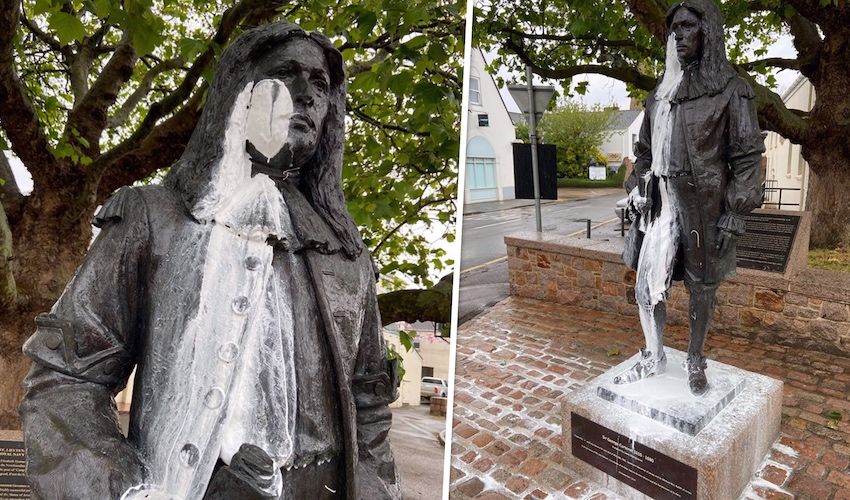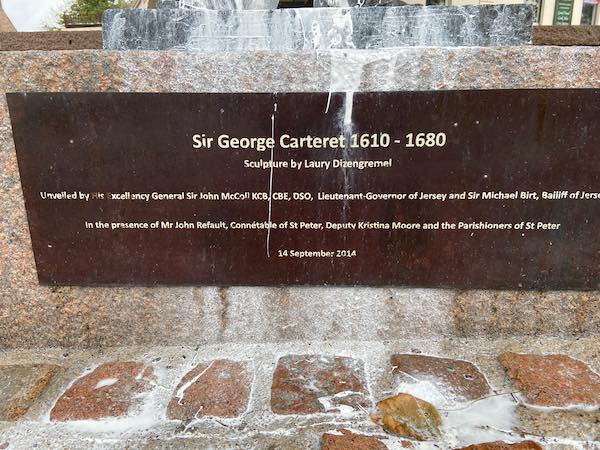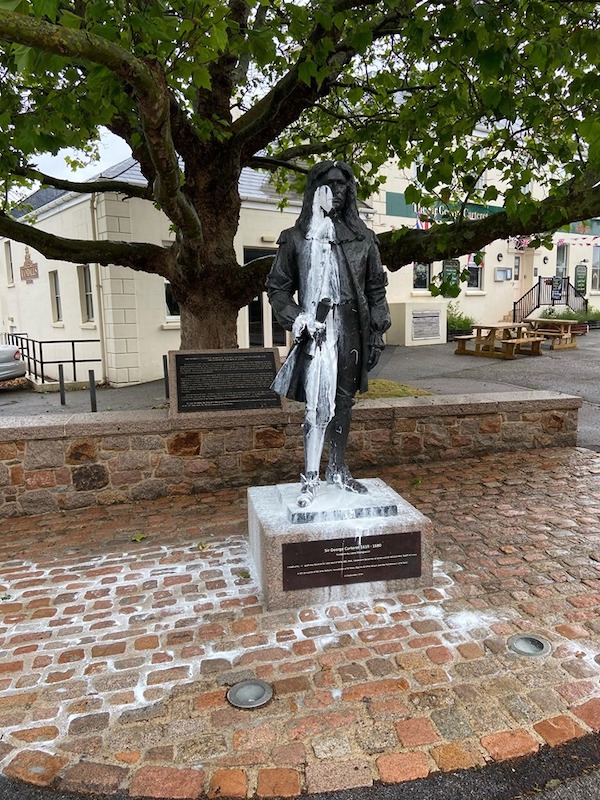


The statue of Sir George Carteret in St. Peter has been vandalised overnight with white paint thrown over it.
Express understands the Police have been informed about the incident.
It comes as calls for the statue to be removed due to the naval privateer’s links with slavery continue to grow.
Others, meanwhile, have called for an interpretation board mentioning Sir George Carteret's slavery involvement to accompany the current feature.
Former Deputy Jennifer Bridge was among those voices, telling Express: "To leave this statue in place without an interpretation board would give both tourists and locals alike the impression that we as an island venerate this man and tacitly condone him. Not in my name.”
Video: White paint was thrown on the statue overnight.
The statue of Sir George Carteret was erected in St. Peter in 2014 to commemorate the 350th anniversary of the founding of New Jersey.
The US state was given its name by the St. Peter-born Vice-Admiral, who was given the land after sheltering King Charles during the English Civil War.
While the accompanying plaque acknowledges Sir George’s role in island history, it does not reference the fact that the privateer supported and profited from the trade of slaves.
The Constable of St. Peter, Richard Vibert, said he condemned racism, but maintained that removing or amending the statue would be tantamount to rewriting history, which he said islanders “cannot and should not” do.
He stated the statue does not seek to glorify any involvement with the slave trade – “something which today is totally unacceptable” - but is rather intended to represent the historic link between Jersey and New Jersey.

Pictured: The plaque on the statue does not mention reference the fact the privateer supported and profited from the trade of slaves.
Mr Vibert added that no Parish funds were used in the project and that the land on which the statue stands is not actually owned by the Parish. The Parish is, however, responsible for maintaining and insuring it.
“George Carteret spent much of his life in England and, unlike Bristol, where a statue was pulled down at the weekend, the Parish did not benefit in any way from George Carteret’s involvement in the slave trade,” Constable Vibert added.
He then went on to condemn racism and highlighted the importance of tolerance.
“Racism and Slavery have no place in today’s society and the events surrounding the death of George Floyd have saddened me,” the Constable said.

Pictured: The statue was erected in 2014.
“It is incomprehensible that such prejudice by those who should be protecting the public resulted in the death of an innocent man.
“It is important that we continue to teach tolerance and address such failures in our modern society in order that across the world both racism and slavery are eradicated.”
As the Black Lives Matter movement intensifies in the UK, several statues linked with slave trade have been toppled including that of slave owner and trader Edward Colston in Bristol. Several others have since followed.
Sent to me today. #JerseyCI #BlackLivesMattters #Slavery pic.twitter.com/3jS7mfiFvg
— Ollie Taylor (@mailolstar) June 6, 2020
Following a physically-distanced protest for racial justice in People’s Park on Saturday one islander taped a board at the base of the statue reading: “Black Lives Matter. George DC traded African people.” Since then, more plaques pointing out his slavery involvement have followed.
One islander has now taken this one step further, throwing white paint on the statue.
Meanwhile, 649 people have signed a Change.org petition for the statue to be removed and for Trenton Square, based in the vicinity of the International Finance Centre buildings, to be renamed.
Inaugurated in 2018, the square aimed to draw parallels between Jersey and New Jersey, whose capital is Trenton.
However, the city itself draws its name from William Trent, who both traded and owned slaves.
The link was raised as an issue at the time of the square’s unveiling, but a change of name was not supported.
Pictured: Trenton Square is based in the vicinity of the International Finance Centre buildings.
A separate e-petition launched on Monday has gained over 430 signatures.
It reads: “William Trent was a Philadelphia merchant who participated in the slave trade, buying and selling enslaved people in the West Indies and the North American colonies. Nobody who did this should be honoured. It was/is terrorism. Then. Now. The square should never have been named after William Trent.”
But, contacted by Express, Constable Crowcroft maintained his view that the Trenton name should not be changed.
He reminded islanders that St. Helier and Trenton are twinned, and proposals for the twinning were adopted by the Parish Assembly 60 to two, with no one speaking against them.
Comments
Comments on this story express the views of the commentator only, not Bailiwick Publishing. We are unable to guarantee the accuracy of any of those comments.